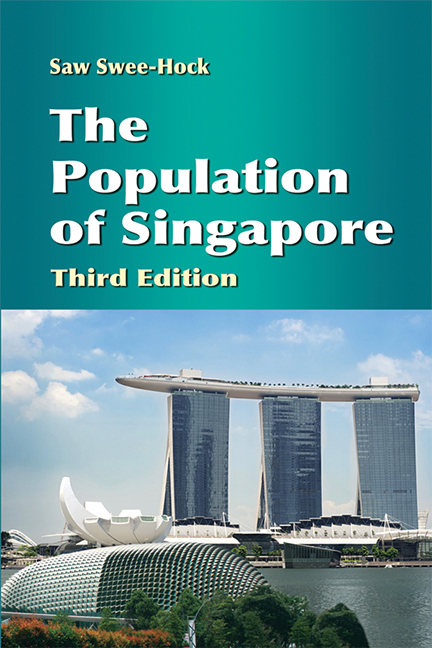Book contents
- Frontmatter
- Contents
- List of Tables
- List of Figures
- Preface
- Preface to Second Edition
- Preface to Third Edition
- 1 Background
- 2 Population Growth and Distribution
- 3 Changing Population Structure
- 4 Migration
- 5 Mortality Trends and Differentials
- 6 Marriage Trends and Patterns
- 7 Divorce Trends and Patterns
- 8 Fertility Trends and Differentials
- 9 Family Planning, Abortion and Sterilisation
- 10 Fertility Policies and Programmes
- 11 Immigration Policies and Programmes
- 12 Labour Force
- 13 Future Population Trends
- Appendix
- Bibliography
- Index
5 - Mortality Trends and Differentials
Published online by Cambridge University Press: 21 October 2015
- Frontmatter
- Contents
- List of Tables
- List of Figures
- Preface
- Preface to Second Edition
- Preface to Third Edition
- 1 Background
- 2 Population Growth and Distribution
- 3 Changing Population Structure
- 4 Migration
- 5 Mortality Trends and Differentials
- 6 Marriage Trends and Patterns
- 7 Divorce Trends and Patterns
- 8 Fertility Trends and Differentials
- 9 Family Planning, Abortion and Sterilisation
- 10 Fertility Policies and Programmes
- 11 Immigration Policies and Programmes
- 12 Labour Force
- 13 Future Population Trends
- Appendix
- Bibliography
- Index
Summary
The size and structure of the population at any given time are determined by the interaction of migration, mortality and fertility in the immediate past. While a previous chapter has dealt with migration, this chapter will be devoted to a discussion of mortality trends and differentials among the major races. A general survey of mortality trends from the late 1870s, when death statistics were first made available, will be presented first, followed by a more thorough analysis for the years after World War II. An attempt will also be made to examine the changing position regarding differentials in mortality among the three main races.
GENERAL MORTALITY TRENDS
In examining the long-term mortality trends we ought to be careful in interpreting the death statistics for the early years because they were probably subject to the progressive improvement in the vital registration system. The doubtful accuracy of population estimates used in the computation of the death rates may cast further doubt on the reliability of these rates. Another problem encountered in the analysis of mortality trends is that the annual death statistics of the early period were affected by violent fluctuations resulting from sporadic epidemics and frequent external displacement and replacement of the population caused by local economic depressions and booms. In view of these difficulties, the figures will be presented in terms of quinquennial years, which will enable us to trace the general direction of mortality trends.
In Table 5.1 are given the figures pertaining to the annual average deaths and the crude death rates for quinquennial years from 1878 onwards. The population denominator employed in the computation of the crude death rate is taken as the average of the five mid-year populations in each given five-year period. An examination of the rates shows that they passed through certain fairly noticeable phases.
- Type
- Chapter
- Information
- The Population of Singapore , pp. 81 - 101Publisher: ISEAS–Yusof Ishak InstitutePrint publication year: 2012



